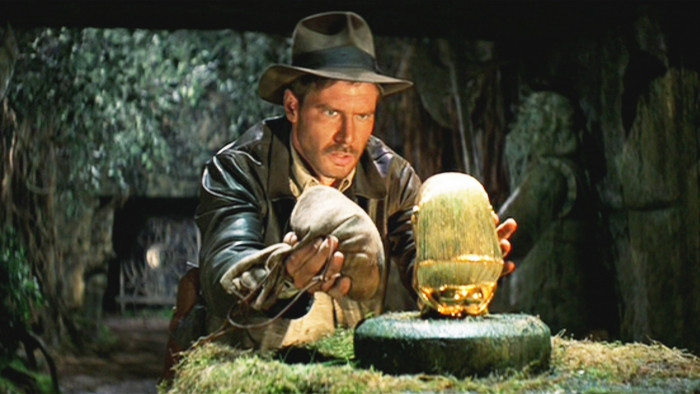The Coen brothers have made a film about the weirdy beardy world of folk music. Andrew Dickens tries to find out why.
‘‘A while ago we had this germ of an idea,’’ says Joel Coen. “I don’t know why, but it was of a folk singer being beaten up outside a folk club in Greenwich Village. It started out almost like a joke; it was an amusing image or situation, so we put it aside for a while. But we kept coming back to it and eventually we thought that maybe it did go somewhere in terms of a story.”
“It did seem intriguing,” adds his brother Ethan. “Because who the hell would beat up a folk singer, and why?”
The Coens are talking about the opening scenes of their latest film: Inside Llewyn Davis. It follows a fictional folk singer, Davis (the recipient of the beating, played by Oscar Isaac) as he works his way from couch to couch, gig to gig, in New York’s Greenwich Village in 1961 – the year Bob Dylan came to town.
The Coens’ amusement at a mild-mannered musician being assaulted may reflect their famously offbeat sense of humour, but it’s hardly the only time people have laughed at folk singers. There is, after all, a certain image attached: solidly knitted Arran jumpers and floaty, flowery dresses; songs about cider and press gangs; a sense of people harvested rather than born. Reeves and Mortimer’s ‘Mulligan & O'Hare’, essentially. So who would beat up a folk singer? Well, maybe someone who justifiably thinks it unlikely the victim will fight back with anything more than a melancholic ode.
Even the current folk revival is mocked. Mumford & Sons, despite their vast international success, are often ridiculed for being namby-pamby posh boys who act as though they’ve just survived debtor’s gaol during the harsh winter of 1838.
Bearded rebellion
So why make a film about these folk folk? It can’t just be to see one get decked in a backstreet. The Coens call the Village scene “interesting”, but it was more than just interesting. It was important.Folk music has, for centuries, told tales of class war and political struggle, of crime and punishment. Those guys in chunky wool knits would just as soon sing an Irish republican song as one about weaving. OK, there are tunes about love and feelings and flowers, too, but much of folk is popular history set to music. During the time depicted in Inside Llewyn Davis, the Village was at the heart of all things anti-establishment. Even folky beards were rebellious, shaped to show that they were deliberately grown rather than just the result of sloth.
“It was the counter-cultural movement of its day,” says Ethan, “a reaction against square society.”
One of the kings of the movement was musician Dave Van Ronk, and it was his book The Mayor Of MacDougal Street that inspired the film. He even had an album called Inside Dave Van Ronk. Van Ronk died in 2002, before the book was finished, but the man who co-wrote and completed it, musician and historian Elijah Wald, is arguably the world’s leading expert on the subject.
“The folk scene at that point was in two parts,” Wald says. “There was the cabaret folk scene – acts playing at the nice supper clubs. Then there were a bunch of people who just met up in Washington Square Park on Sunday afternoons. They were a hardcore group who wanted to do the real old-fashioned stuff and play it right, rather than making it prettier. Until then, the idea had always been to turn folk music into something that sounded professional, but these folk didn’t expect to be able to make a living off it, so why bother?”
Why bother indeed. Especially when the amateurism was part of the appeal. “A lot of the crowds were tourists who had come to the Village to see the creeps, the weirdos,” notes Wald. “The original folk club in the Village was Café Bizarre, which had a doorman in a Frankenstein suit. It was designed to show off the weird Greenwich Village.”
Village people
A stroll around the Village today reveals little evidence of the folk scene. No Frankenstein suits, few weirdos. Even Cafe Wha? – the only remaining venue of genuine note in the area (Dylan played his first New York gig there) – is now no different to any other live music bar. The one authentic trace is the odd gathering of grey-haired musicians in Washington Square, still playing the real stuff the real way, but – to be brutally honest – you have to wonder for how long.
It’s sad, but it’s not surprising. In London, you can’t see gigs at the Rainbow any more; the Hamburg that hardened the Beatles is gone; we’ve said adios to the Haçienda. Music scenes don’t stick around and their homes are rarely preserved. But, thankfully in most cases, the music is.
“In the Twenties, this country began recording the poorest people in the world and broadcasting their stories, their voices worldwide,” says T Bone Burnett, legendary songwriter, producer and longtime Coens collaborator. “That’s the most democratic thing the United States ever did. Look what grew out of that: the untrained voice of the common man, untrained musician, untrained songwriter, conjuring up this thing that becomes a song and which lasts 100 years.
“The Greenwich Village scene had this whole preservationist idea; a lot of people going into the mountains and gathering this music up, trying not to lose our cultural identity in the big city. In Washington Square Park there would be a klezmer band, a bluegrass band, then a folk band, an Appalachian band and a mountain string band. There was a lot of keeping great things from the past. We are still doing it; we are bringing the things with us that are important to remember.”
Old souls
At City Hall, New York, where a charity concert is celebrating the music of Inside Llewyn Davis, there is evidence of this. We hear one or two original tracks, penned by Burnett, but the majority of the music – some in the film, some not – is old. And much of it is played by young people; acts such as the Punch Brothers, The Avett Brothers, even Jack White and, fresh from his boxcar, Wimbledon’s own Depression Era migratory worker, Marcus Mumford. Isaac even joins in. They play with verve, a seemingly genuine desire to connect with these old words and tunes, as if they resent tonight’s need for electricity.
“In 1960 there was a very real fear that the entire world was going to get blown up any time soon,” says Wald. “A lot of young people wanted something real and serious to hold on to. For some, this music was something real and serious and old, and the opposite of technology, because technology was about to destroy the world. Young people are doing that right now with global warming. There’s a pretty serious old-time folk revival happening in the US for the first time since the early Sixties.”
And this is perhaps the key to folk’s success: its familiarity and comfort, it’s ‘realness’. Like the weirdo-watching tourists of Greenwich Village, we may point and laugh at ukulele-wielding wannabes who have adopted a Luddite infatuation with all things old and ‘artisan’ (except their smartphones), but folk is the solid wood furniture of music, the brick-built house, and it’s the music we’d choose to live in, to look after us when we’re scared of Armageddon. And for that reason alone, like a tuneful cockroach, it is indestructible.
Inside Llewyn Davis is at cinemas nationwide from 24 January
(Image: All Star)
Latest
Related Reviews and Shortlists


The 10 best war movies of the 21st century









